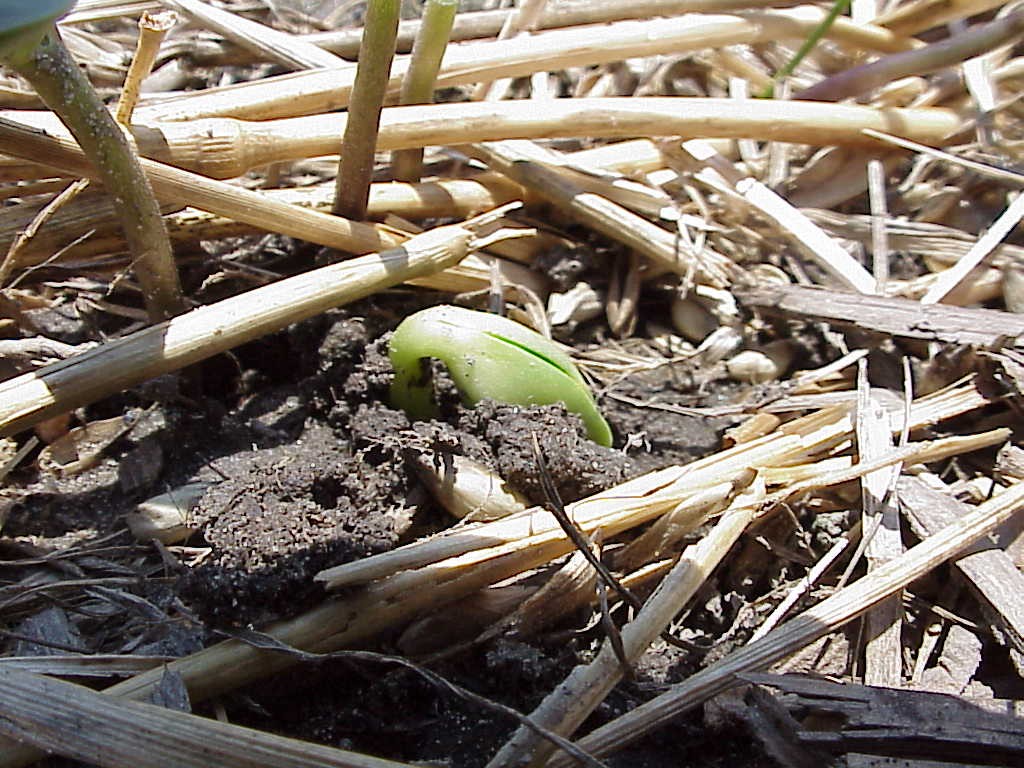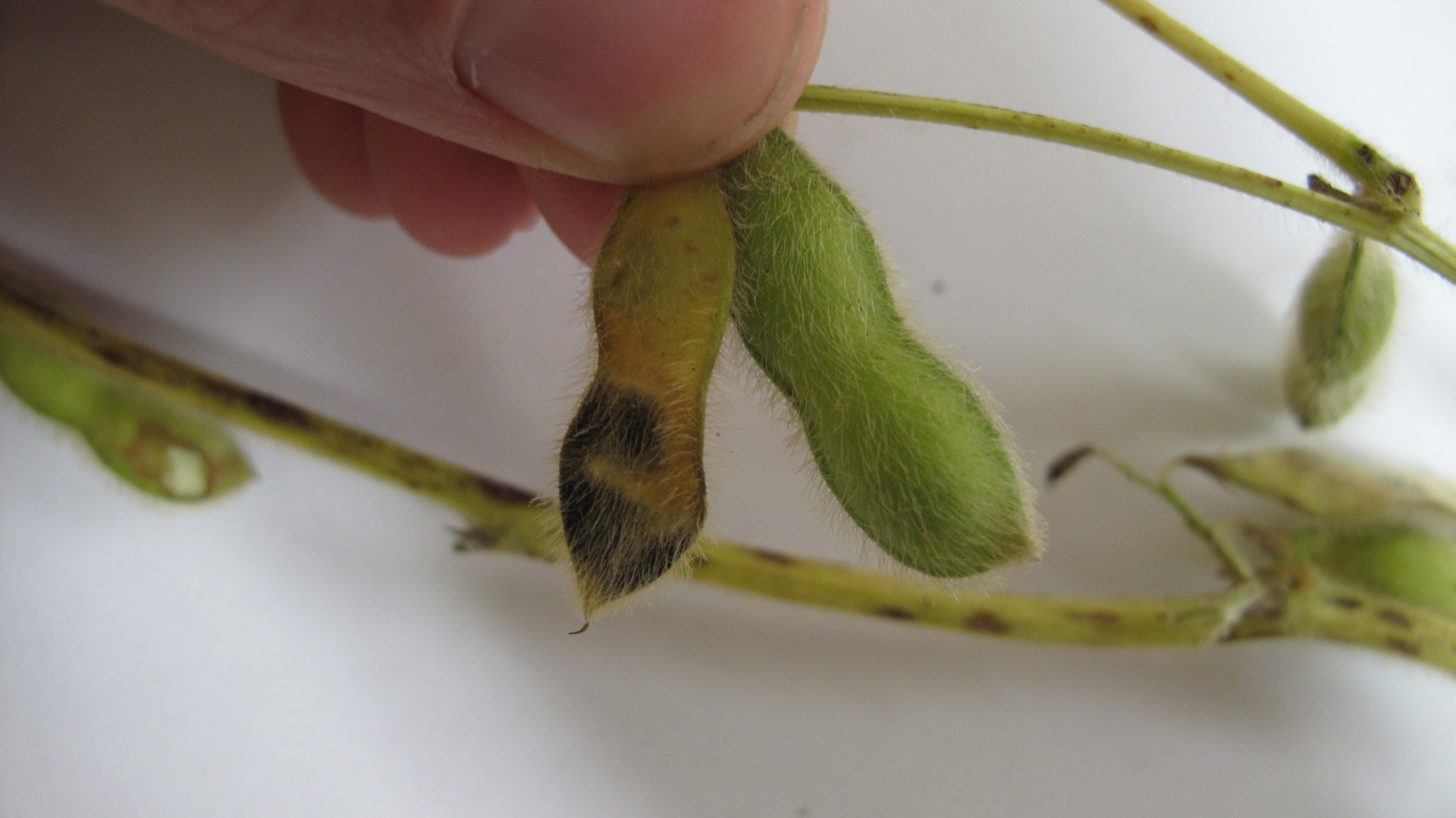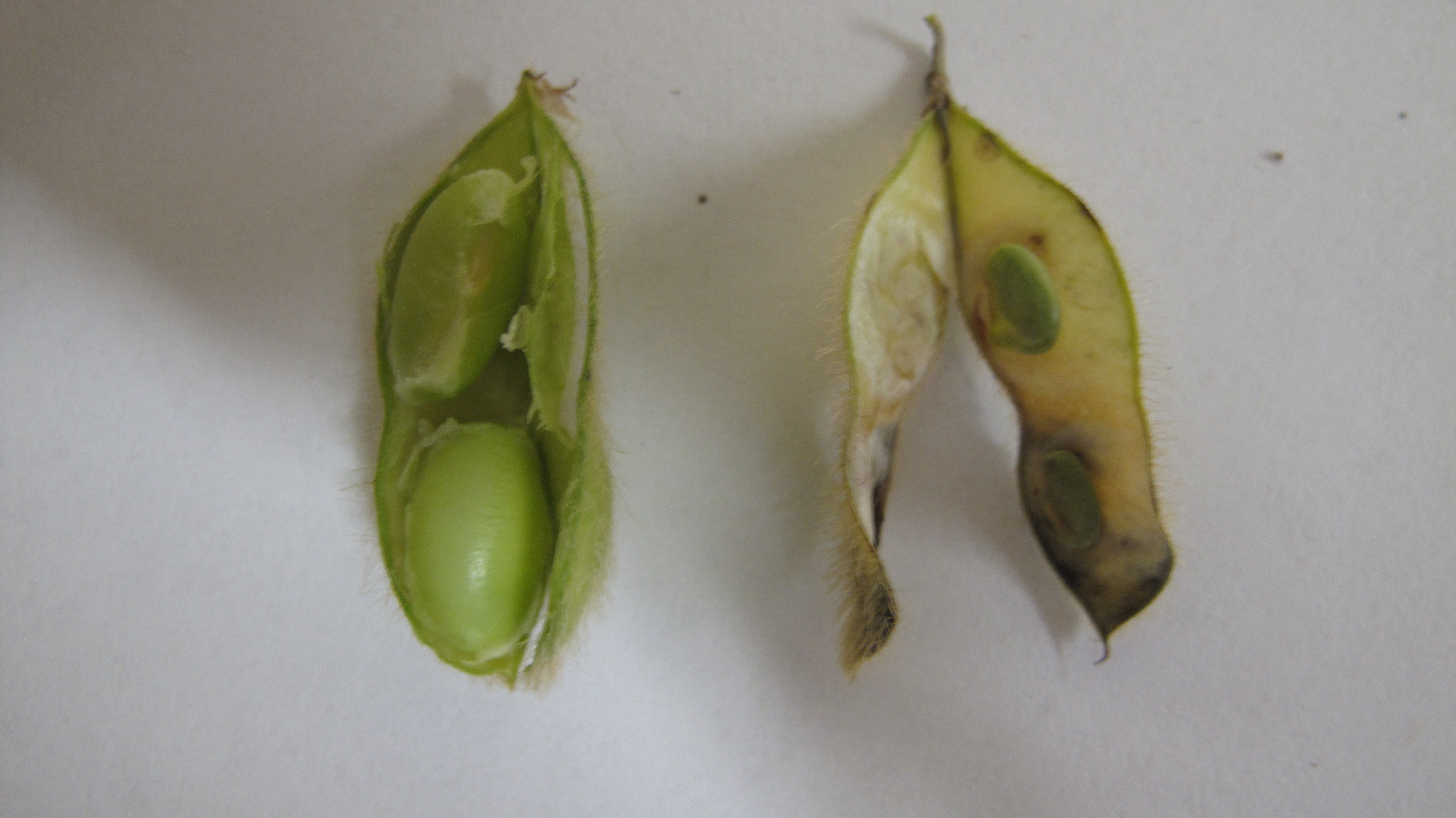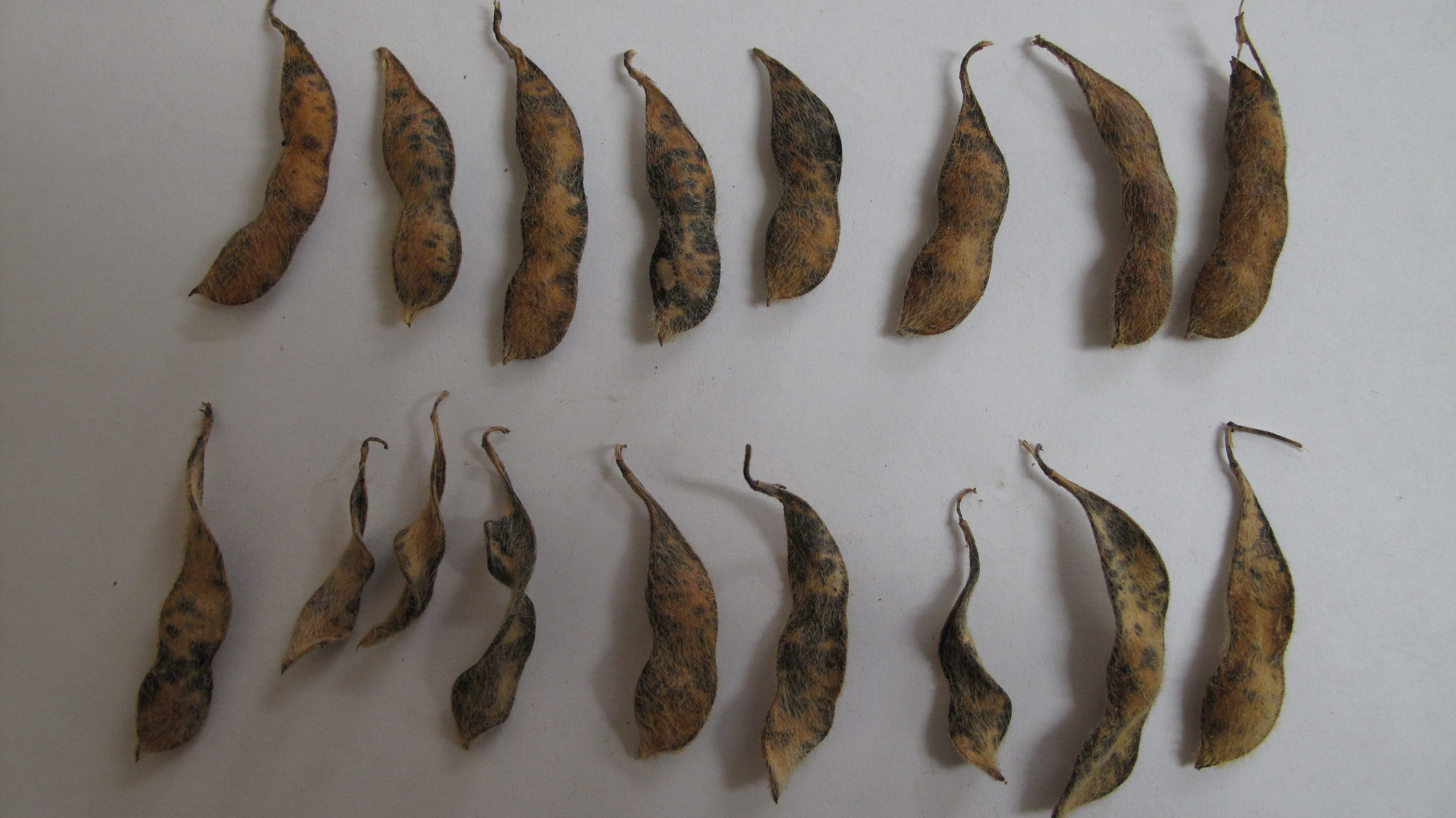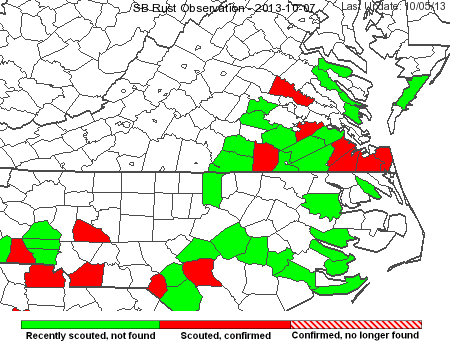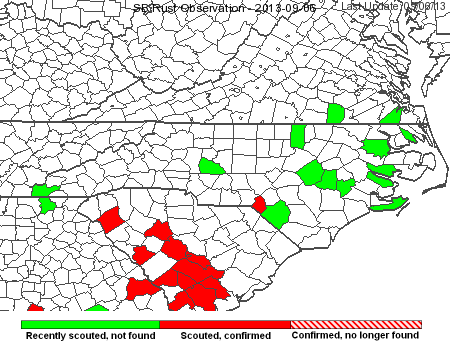While most of our double-cropped soybean were planted in a timely manner, many acres were not. And I use the word “timely” very loosely here. This year, “timely” means that they were planted by early- to mid-July. Usually I refer to July planting as “late”, even if the soybean are planted during the first week of July. But, the wet June and July did not allow “timely” planting in many parts of the Commonwealth. Much of Virginia’s double-crop soybean were planted in July and some acres were even planted in early-August.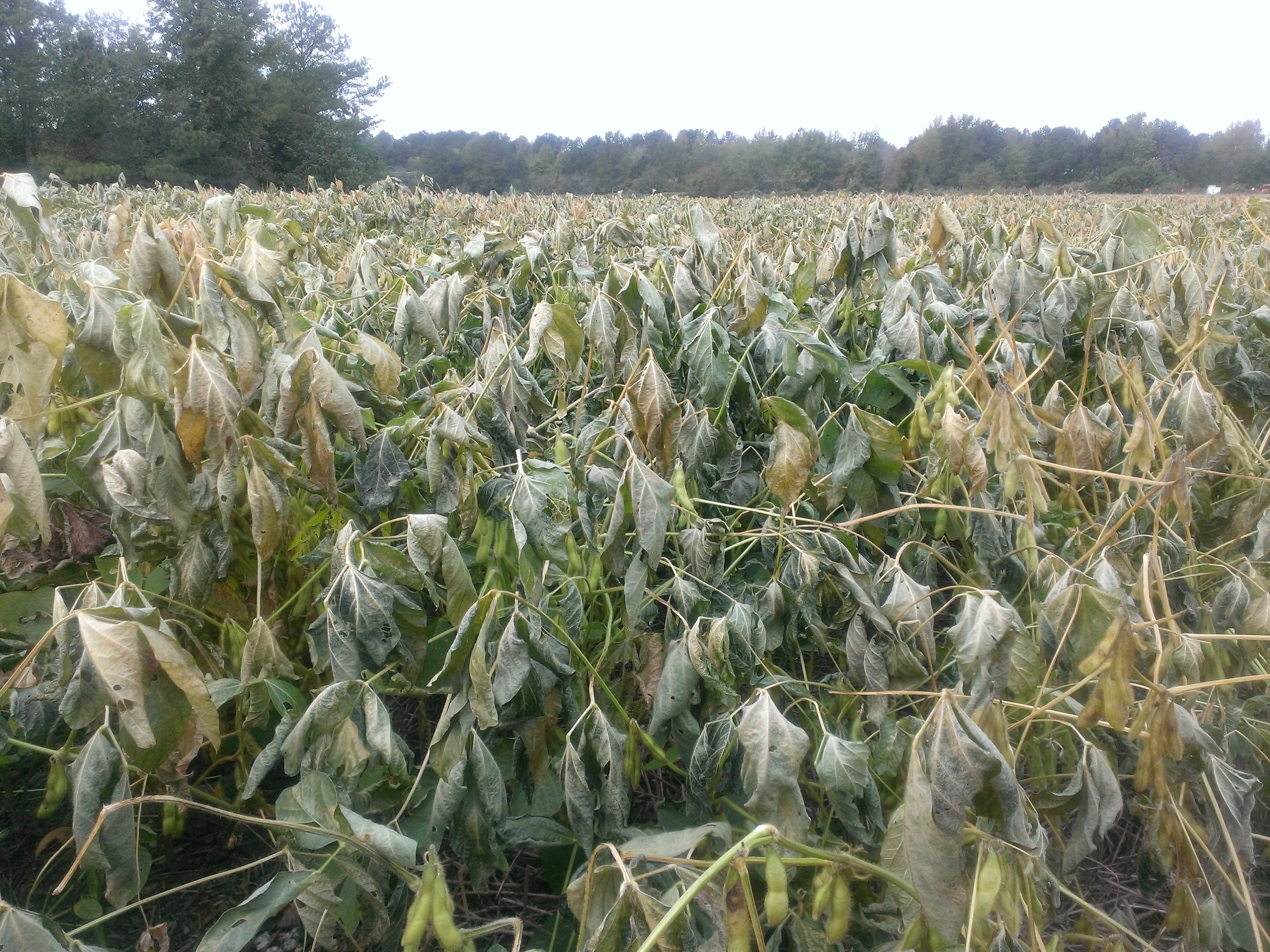
As a review (maybe a disclaimer?), I did suggest that we continue planting soybean though mid-July because I’ve seen some pretty good yields (in the 30’s) from July-planted soybean. But, planting after mid-July is always risky. With a relatively warm and sunny August and September, late-July and even August-planted beans can catch up and mature before the frost – if the frost waits until early-November. Of course, this year was neither warm or sunny and our first frost came in late-October. Maturity was slowed. The end result is frost- and freeze-damaged soybean.
We are experiencing several scenarios:
- Freeze-Damaged Immature Soybean. Soybean were in the R6 stage (green pods and seed) and a hard freeze killed the plant. In this worst case scenario, the crop will not mature and you’ll be left with green seed that you cannot sell. Hopefully very little of our crop experienced this.
- Frost-Damaged Immature Soybean. Soybean was in the R6 stage and a frost damaged many of the leaves on the plant (see photo above). In this case, the plants were not killed; therefore, they should continue to mature. But, maturity will be delayed and drying time will be extended. I cannot guarantee that you won’t have some green seed when you harvest, but the number should be much less than for scenario 1. This all depends on how close you were to physiological maturity (R7). And, it’s very likely that the seed will be smaller (photosynthate from the leaves can’t move to the seed if the leaves aren’t there).
- Frost/Freeze-Damaged Mature Soybean. Soybean were physiologically mature (R7 stage; at least one pod on 50% of the plants has reached its final brown color). In this case, whether the crop experienced just a frost or a even a hard freeze, the crop will mature but the seed will take a little longer to dry.
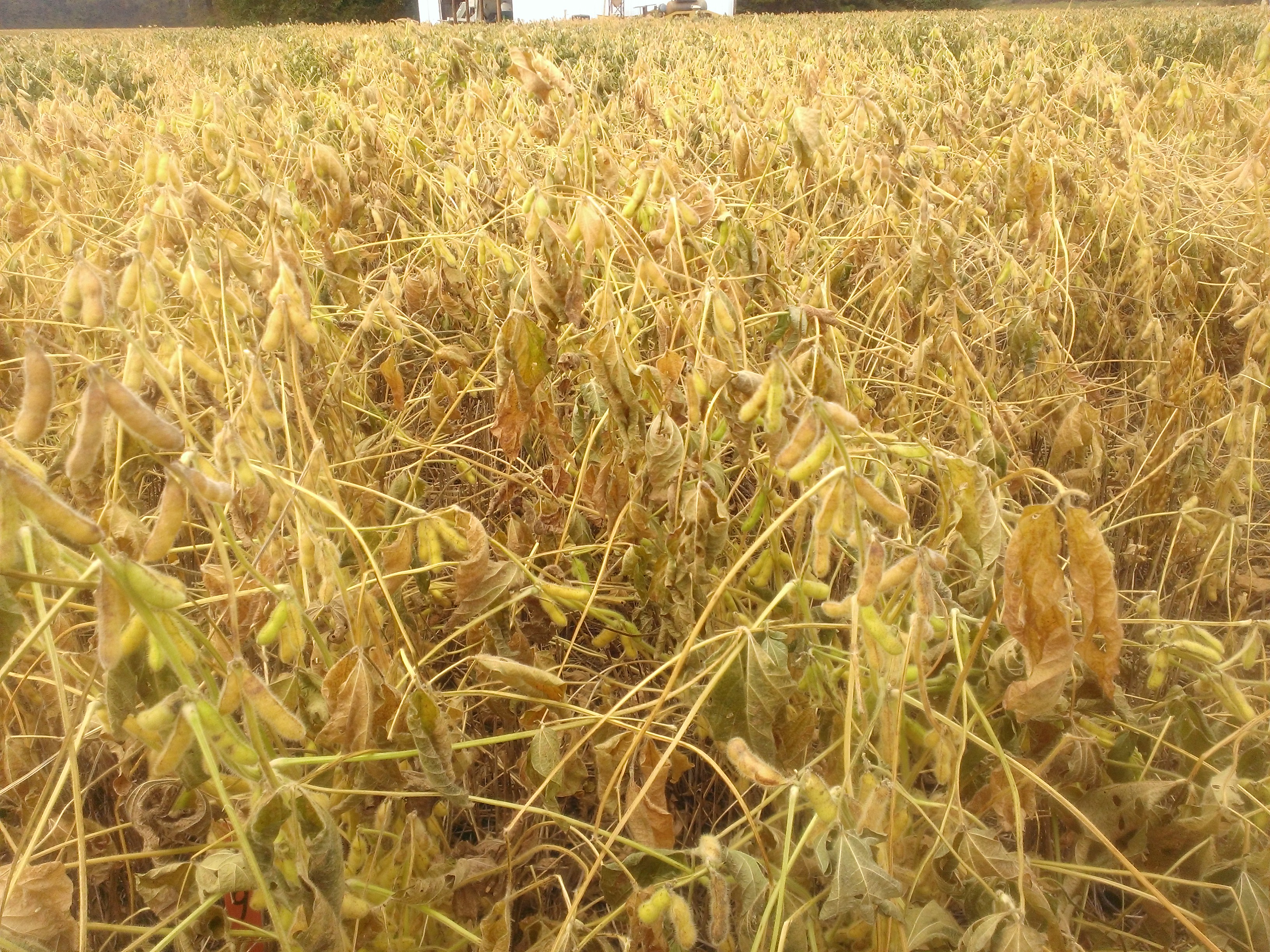
Regardless of the scenario you may be experiencing, there are some management tactics that you can use to minimize further damage. Instead of spelling out all of these tactics myself, I’ll borrow an article from Mike Staton, Michigan State University Extension Educator. He is probably more experienced with frost/freeze-damaged soybean than I and he has summarized the issue well.
Management Recommendations for Frost-Damaged Soybeans
Mike Staton, MSU Extension CURE Soybean Educator
This article will help soybean producers reduce the adverse effects of an early frost.
The late planting season combined with some early frost events has increased the potential for frost damage to occur in soybeans this fall. The following recommendations from Michigan State University Extension will help you reduce the adverse impacts in the event that some of your soybean fields are damaged by frost.
Frost-damaged soybeans are generally considered salvageable as long as the plants reached the R6 growth stage at the time the killing frost occurred. The R6 growth stage occurs when the beans completely fill one pod at one of the upper four nodes on the main stem on 50% of the plants in the field. In dense, green soybeans, frost/freeze damage kills the upper leaves but rarely penetrates deeply into the canopy when temperatures remain above 30o F. However, once the upper leaves have been damaged, subsequent freeze events will penetrate deeper into the canopy. Once the plants reach the R7 growth stage, yield reductions due to frost/freeze injury will be minor. The R7 growth stage occurs when one pod on the main stem has attained its mature color on 50% of the plants in the field.
Combine Adjustment:
Frost-damaged beans will probably be wetter than normal and more difficult to thresh. Your first step in adjusting for this condition is to reduce the concave clearance. If acceptable threshing still does not occur, increase the speed of the cylinder. Make incremental adjustments and check your progress after each adjustment.
Harvest at Higher Moisture Contents:
Soybeans that experienced severe frost/freeze damage extending well into the crop canopy will dry down slowly. In this case, producers should avoid significant harvest delays by harvesting frost-damaged fields at moisture levels between 16 and 18%. Data from the University of Wisconsin showed that shatter losses of 0.2 bushels per acre per day occur after the beans reach 16 to 18% moisture. The beans will need to be dried to a safe moisture level for storage (12% for 6 months). Electronic moisture meters tend to underestimate the moisture levels in green and immature soybeans so remember to add 1.5 percentage points to the moisture meter readings when testing mixtures of green, immature and mature beans and adjust drying times accordingly. In fields where only the upper leaves were damaged by frost, producers should wait and allow the beans to mature and dry to 14 to 15% in the field if possible.
Drying Frost-Damaged Soybeans with Ambient Air:
If only 2 to 3 points of moisture need to be removed, the air temperature is above 60o F and below 75% relative humidity; no supplemental heat is required in drying bins equipped with full perforated floors and fans capable of producing one to two cfm/bu. However, drying will occur slowly. Drying times depend on initial moisture content, air flow, grain depth and weather conditions. Aeration fans should be run continuously as long as the beans are above 15% moisture and the average humidity of the air is below 70 to 75%.
Drying Frost-Damaged Soybeans with Supplemental Heat:
If you plan to add supplemental heat, be careful as soybeans are more fragile than corn and can be damaged by drying temperatures above 130o F. These temperatures will cause excessive seed coat cracking and split beans. The relative humidity of the drying air should always be maintained above 40% to protect the integrity of the seed coats and prevent splits. Relative humidity is cut in half for each 20 degrees that the air is warmed. Growers can control the heat and humidity of the drying air by using short burner cycles or by changing the burner jets.
Store Frost-Damaged Beans
Green and immature soybeans are included in the total damage factor in the U.S. soybean grading standard. Elevators will discount loads containing green and immature soybeans and in some cases may reject entire loads if the damage levels are high. Discounts can be reduced by screening out the small beans, drying the rest to 12% moisture and storing them in aerated bins for at least six weeks. The green color may fade and marketing concerns should be reduced after this amount of time.
This article was produced by the SMaRT project (Soybean Management and Research Technology). The SMaRT project was developed to help Michigan producers increase soybean yields and farm profitability. SMaRT is a partnership between MSU Extension and the Michigan Soybean Checkoff program.


